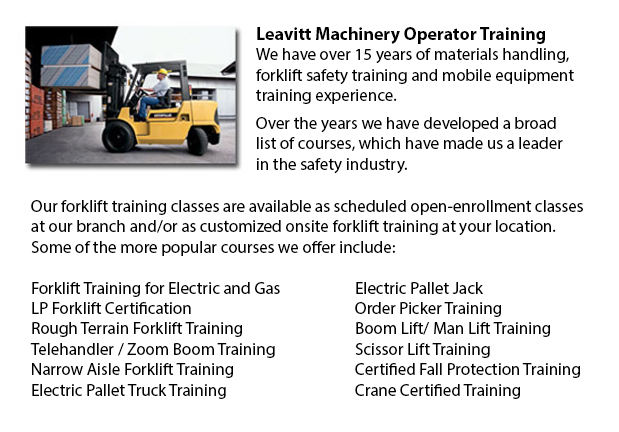
There are in point of fact two categories of forklifts within the manufacturing industry, the rough terrain model and the industrial model. Rough terrain forklifts appeared in the 1940’s designed predominantly for use on irregular roads, ideal for lumberyards and building sites, providing hauling muscle when there was no paved surface available.
Rough terrain lift trucks usually utilize an internal combustion engine with a battery for power. The engines are able to run on propane, diesel or gas. Several makers are playing with rough terrain forklifts that consume vegetable matter and run from ethanol. Large pneumatic tires with deep treads typify these forklifts to allow them to latch onto the roughest soil type without any misstep or sliding.
The initial designs of rough terrain lift trucks were able to carry weights of up to 1000 lbs, using forks that could run under the item, raise it a little bit and then transport it to an alternate location. After some time on the market, all terrain vehicles had been given supplementary hauling strength to about 2000 lbs capacity. In the 1960's telescoping booms were added, allowing them to stack supplies a good deal higher than in previous years. The telescoping design characteristic is a staple of most rough terrain forklifts at the moment. Present models are capable of handling well over 4000 lbs due to the continued improvements through the years. Telescoping capability has additionally improved with some styles achieving a height of 35 feet. Worker safety has also become a focus with a lot of all terrain lift trucks currently manufactured are fitted with an enclosed cab for the operator, as opposed to the older open air seating capacity.
The all terrain forklifts existing today work just as well on paved floors as on unpaved surfaces. These rough terrain lift trucks are being marketed for their usefulness enabling businesses to transfer items from outside the plant to the inside or vice versa.
-
Doosan Forklift
Doosan Infracore Company Ltd. is a transnational establishment consisting of Diesel Engines, Defense Industry goods, Industrial Vehicles, Construction Equipment and Machine Instruments and Mechanization Systems. In the United States, Doosan Infr... More -
JLG Telehandler
After retiring in the late 1960's, John L. Grove started out on a cross country RV trip. After spending many years establishing his family built crane business with his brother, John had no idea that this journey would bring about the rise of JLG Ind... More -
Boom Lifts
Boom Lifts are a table lift mechanism that can be lifted or lowered to differing heights, making this apparatus a functional instrument for various industrial functions. There are some unique kinds of Boom Lift consisting of knuckle booms, scissor pl... More -
Terex Forklift
Terex Forklifts takes great pride in producing quality equipment that helps better their customers' efficiency while standing by their goal to offer a cost effective yet consistent product line. Through many divestures and acquisitions planned to exp... More -
Komatsu Forklift
Komatsu Forklift U.S.A. Inc. has an outstanding reputation for building dependable and resilient lift trucks. Komatsu is recognized around the world as a business with a rich heritage while preserving an outstanding standard of refinement and quality... More

Forklift Training Red Deer
TOLL FREE: 1-888-254-6157
Red Deer, Alberta
forklifttrainingreddeer.com
Email Us
About Us


